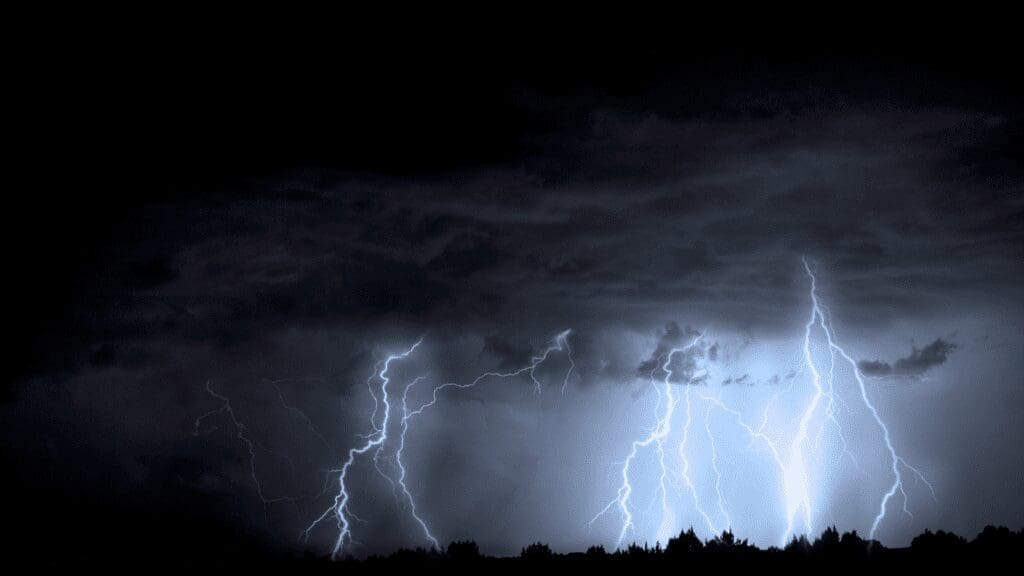Typically characterized by high wind speeds and torrential rains that could produce flooding, storms often exert enormous pressure on the exterior surfaces of the structures in their path. On the other hand, the doors, windows, and roofs are the most vulnerable components of a home. If they’re compromised during a storm, wind and water could enter the home and cause catastrophic damage.
Whether a storm affects only the exterior or both the exterior and interior of a home, the pressure exerted by the wind and/or floodwater against the walls, floors, ceiling, roof, and other elements is a key contributor to the overall damage the home may sustain. That’s because high winds and/or flooding can affect every single component in a home, including the framing and foundation. Even masonry homes, which are usually able to withstand storms better than other types of homes, can be structurally compromised byhigh winds and/or flooding. Since a strong, structurally sound foundation is one of the essential parts of a durable home, let’s find out how bad weather could affect both your foundation and home.
Storm Damage to Your Home: Risks and Signs
As mentioned above, there are two types of damage a Texas home could sustain due to a storm: water damage andwind damage. To begin with, water damage occurs particularly when the clay soil around and underneath your home absorbs large quantities of rainwater. Because clay soil tends to hold water and moisture for long periods of time, the ground around and under your foundation may become very soft and unstable.
In conjunction with the various loads and mechanical forces to which the entire structure is subject, soft clay soil may cause your home to settle in an uneven fashion. Therefore, if your home seems to sit unevenly on the ground or your foundation has begun to sink deeper into the soil, your home has probably sustained water damage due to a recent storm.
The appearance of cracks in the foundation and/or exterior walls is another sign potentially indicating that your home was affected by a storm. While a few cracks here and there could be from thenormal wear and tear that typically occurs in a home due to aging, any cracks that develop shortly after a storm and are wider than 1/8 of an inch often signal that something serious is going on with your foundation. Additionally, you should keep an eye on any cracks that are diagonal or have a zigzag or stair-step pattern and continue to grow over time.
If your home’s exterior is in good condition, without any signs of damage, it’s time to look inside your home. Because concrete is a porous material, your concrete foundation and slab can absorb and hold a lot of water, which may cause excess moisture to build up in your floor system. When your floor system is exposed to large quantities of water or moisture, your floor covering may begin to deteriorate. In a nutshell, high levels of the moisture trapped inside your floor system may lead to a whole host of problems, including peaking, buckling, cupping, sagging, andsoft spots. Additionally, because a concrete slab can expand significantly when exposed to excess water or moisture, it may cause tiles to pop out or cracks to form in tile flooring.
Since the signs of water damage to a foundation are less noticeable on the inside, be sure to carefully inspect your ceiling, floors, and drywall for cracks as well. A musty odor in your home accompanied by mold and mildew growing on your interior walls is another potential indicator of foundation damage due to heavy rainfall or flooding.
Coming down to wind damage, high wind events could have enough force to lift roofs from homes. All that pressure may cause walls to shift, which may affect other structural components, including the foundation. New cracks that have developed in your walls, ceiling, and foundation are the most common signs of wind damage.
To avoid wind damage to your home, also make sure that the roots of any trees or shrubs located near your home don’t grow under your foundation. If shrubs or trees with roots under your home are pulled out from the ground or knocked down during wind gusts, their roots could push through the foundation and damage your home.
After every storm, heavy rain, or high wind event, it’s important to carefully inspect your home for signs of damage. If you’re unsure whether your home has been damaged or not, you should call in an experienced foundation repair contractor as soon as possible. Hidden foundation damage always gets worse over time, causing more severe and costly problems later on. Whether there are any visible signs of foundation damage or you just suspect that your foundation and home were affected by a storm, our skilled professionals can help you avoid extensive damage throughout your property. To schedule a free foundation quote,get in touch with Allied Foundation today!

